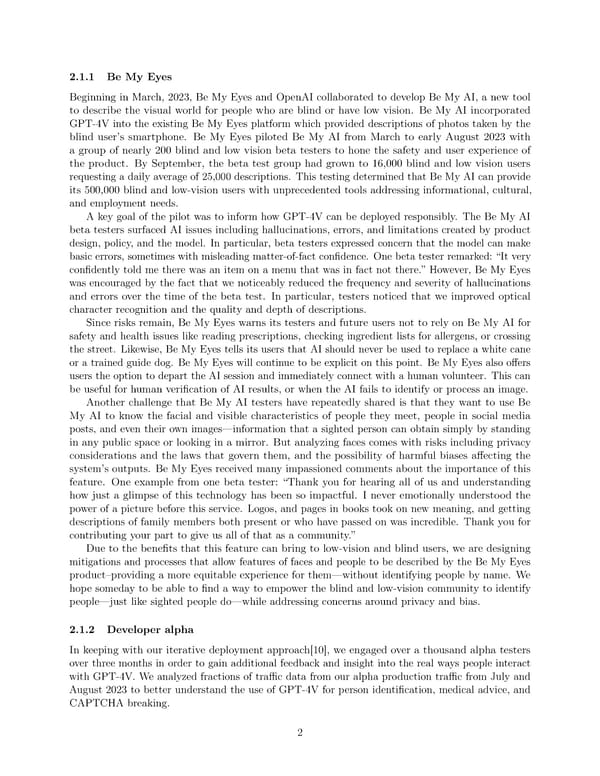2.1.1 Be My Eyes Beginning in March, 2023, Be My Eyes and OpenAI collaborated to develop Be My AI, a new tool to describe the visual world for people who are blind or have low vision. Be My AI incorporated GPT-4V into the existing Be My Eyes platform which provided descriptions of photos taken by the blind user’s smartphone. Be My Eyes piloted Be My AI from March to early August 2023 with a group of nearly 200 blind and low vision beta testers to hone the safety and user experience of the product. By September, the beta test group had grown to 16,000 blind and low vision users requesting a daily average of 25,000 descriptions. This testing determined that Be My AI can provide its 500,000 blind and low-vision users with unprecedented tools addressing informational, cultural, and employment needs. Akey goal of the pilot was to inform how GPT-4V can be deployed responsibly. The Be My AI beta testers surfaced AI issues including hallucinations, errors, and limitations created by product design, policy, and the model. In particular, beta testers expressed concern that the model can make basic errors, sometimes with misleading matter-of-fact con昀椀dence. One beta tester remarked:
 GPT-4V(ision) Page 1 Page 3
GPT-4V(ision) Page 1 Page 3